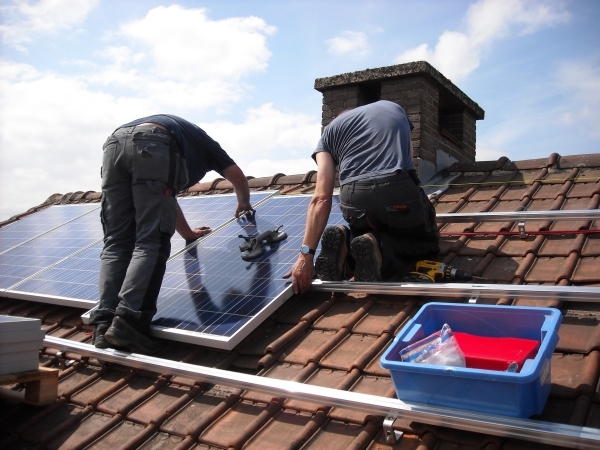What pushes us to modify our actions?
Whether we like it or not, our home, planet Earth, is affected by our collective actions. The climate is changing and causing centuries-old glaciers and polar ice caps to melt, warming oceans and causing widespread drought.
Major changes are needed by everyone in order to secure a more sustainable future. There are many new shifts we can make to lower our carbon footprint — some small, some big. The bigger changes, such as converting our water-intensive lawns or installing rooftop solar panels, are not always easy changes to make.
Often we need an incentive or disincentive. Most come in the form of a financial gain or loss. Do these incentives and disincentives work to help us make a change? Furthermore, can we make change without them?
Recently, I flew to Oregon for a funeral and, since it was last minute, I tried to find the cheapest flight. I had never flown Spirit Airlines before and the price was significantly lower than the rest (at first glance, that is). You have to pay for your seat, your check-in luggage, carry-on baggage, check-in service (if you choose to speak to a human) and even a cup of coffee.
Consequently, it made me evaluate how much luggage I brought and what was most important — getting there safely, even if it was in the cheap seats in the back of the plane. I noticed fewer carry-ons from other passengers and way less trash collected. Apparently, most of us can get through a two-hour flight without eating snacks and guzzling drinks.
When things are cheap or even free or when we are just stuck in mindless habits, we tend to consume more than we would if systems were in place to make us choose to pay or do without. This is a disincentive, helping us make changes by encouraging us not to do something or else we must pay.
An incentive, on the other hand, encourages us to take an action and in return receive a benefit, usually monetary. Take our household water consumption. Nearly 60 percent of our water usage is for outside the home, and nearly 50 percent of that is wasted runoff.
Americans are used to having sprawling green lawns. It was a beautiful choice back in the day when kids actually played in the yard and water was plentiful. However, it is now vital that we reassess our water usage. We have been in a drought for more than 15 years, and it is imperative that we strengthen our efforts to conserve water.
The Southern Nevada Water Authority has had a long-running rebate program allowing homes, businesses and schools to convert their water-intensive grass into more efficient use. In return, SNWA will give a rebate of $2 per square foot.
Added to the future annual water savings, that works out to a sizable incentive. Years ago, my husband and I participated in this program and saw our water bills drop nearly 70 percent.
This year a local nonprofit, Green Our Planet, will work with many local organizations in a program called Earth Day 1 Million, where it will assist nearly a dozen schools remove portions of water-intensive grass and build raised vegetable garden beds and outdoor garden classrooms. This will collectively save more than 1 million gallons of water annually.
The organization also will receive the SNWA rebate to cover the costs, and the schools will not only be rewarded with significant annual water savings but will have school gardens to use and teach a range of topics from living science to health and nutrition.
SNWA estimates its rebate program has helped upgrade more than 175 million square feet of lawn to water-efficient landscaping and saved Southern Nevada billions of gallons of water. SNWA started this program to help solve the challenge of conserving water for a collective good.
NV Energy also made a program for a similar challenge, the need for our community to move to renewable energy as quickly and swiftly as possible. Along with governmental subsidies in the form of rebates, rooftop solar owners were able to receive assistance in purchasing and installing their solar panels, making them mini-power companies.
Net metering, the system where the power company would pay rooftop solar owners for the excess energy they produced, had also become an incentive, of sorts. The difference, however, is that net metering is a two-way agreement between the power company and the mini-power companies.
The net metering is (or should be) a payment for a service. One of the services that the rooftop solar owners provide is using the abundant sun to collect energy, which otherwise is mostly produced less sustainably outside the state. Another service is the efficient transferring of that power to neighbors close by, saving in energy loss. A third service is that NV Energy receives renewable energy credits that it is mandated to meet, saving the company from the cost of building its own renewable energy sites. Both parties benefit from this kind of incentive.
In recent news, the Public Utilities Commission decided to allow NV Energy to change its agreements with existing customers, as well as offer a net metering price far lower than seems to be fair — even after many public hearings against this move. This drastic one-sided change in this two-way incentive has caused solar companies to abruptly exit Nevada's growing solar market and has discouraged new rooftop owners.
Unfortunately, this counterproductive move brought Nevadans two steps forward and three steps back. I can't help but ask: When will we all start making cooperative, smart, necessary moves toward a sustainable future with or without incentives?
Hard changes are needed. According to the Union of Concerned Scientists, we all (individuals, governments and corporations) need to cut our carbon emissions by at least 20 percent. This can be done in many big ways involving changes and reactions in our consumption, travels and food choices. For more information check out your own carbon footprint and important changes you can make at Berkeley's Cool Climate Network.
— Mary Beth Horiai has split her adult life between Japan and Southern Nevada. In Las Vegas, Horiai worked for the nonprofit U.S. Green Building Council of Nevada. A graduate of UNLV, she was trained as a speaker for The Climate Reality Project. For more information and links to additional resources relating to this column, visit www.driverofchange.net.


















